
The Mysterious Island is a novel by Jules Verne, published in 1875. The first edition, published by Hetzel, contains illustrations by Jules Férat. The novel is a crossover sequel to Verne's famous Twenty Thousand Leagues Under the Seas (1870) and In Search of the Castaways (1867–68), though its themes are vastly different from those books. An early draft of the novel, rejected by Verne's publisher and wholly reconceived before publication, was titled Shipwrecked Family: Marooned with Uncle Robinson, indicating the influence of the novels Robinson Crusoe and The Swiss Family Robinson. Verne developed a similar theme in his novel, Godfrey Morgan.

Voyage: Inspired by Jules Verne is a point-and-click adventure game with pre-rendered graphics, developed by Kheops Studio and published by The Adventure Company for the PC in 2005. The game's story focuses on a French adventurer's journey to the Moon in the 19th century, and the ancient lunar civilization he subsequently finds.

Kheops Studio was an independent video game development studio created in September 2003. Its games were published by Microïds, which acquired the brand and intellectual property as insolvency assets of Cryo Interactive in 2002. The company was co-founded by Benoît Hozjan, who also served as the creative director for the studio and Stéphane Petit, who served as technical director. Kheops developed adventure games for the PC platform and released several major successful games. The studio is best known for creating games that have been described by the developer as "cultural entertainment", that is, games which are heavily drawn from historical or literary sources to include a mixture of history and fiction. After filing for bankruptcy, the studio was closed down in January 2012.

Echo: Secrets of the Lost Cavern is a computer adventure game released in July 2005. It was developed by Kheops Studio and published by The Adventure Company. It is very similar to previous Kheops Studio games; the interface and gameplay are almost identical to Return to Mysterious Island. The player takes the role of Arok, a 15-year-old European Homo sapiens from the Paleolithic period.

White Birds Productions was a French video game developer. White Birds was founded by Benoît Sokal, Olivier Fontenay, Jean-Philippe Messian and Michel Bams in August 2003. White Birds specialised in adventure games but also handled other work, such as synthetic image creation, comics and merchandising.
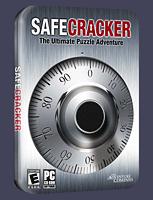
Safecracker: The Ultimate Puzzle Adventure is a 2006 puzzle adventure game developed by Kheops Studio and published by The Adventure Company. It is the spiritual successor to Daydream Software's 1997 title Safecracker.
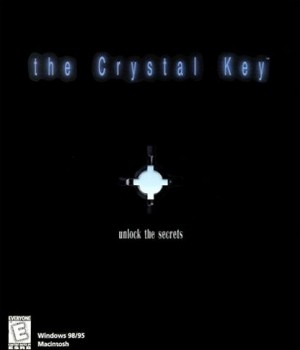
The Crystal Key is a 1999 graphic adventure video game developed by Earthlight Productions and published by DreamCatcher Interactive. A work of science fiction, it casts the player as an interstellar explorer on a quest to save Earth from Ozgar, a malevolent alien conqueror. The player uses portals to traverse multiple planets, including desert and jungle worlds, while collecting items and solving puzzles. The Crystal Key was conceived by John and Jennifer Matheson in the mid-1990s, and it underwent a five-year creation process hampered by problems with its technology. It was signed by DreamCatcher as part of the publisher's strategic push into the adventure game genre.

Dracula 3: The Path of the Dragon is a 2008 point-and-click adventure video game developed by Kheops Studio for Microsoft Windows, and published by MC2 France under their Microïds label in Europe and Encore in North America. In 2010, an abridged version of the game developed by Tetraedge Games and published by Chillingo was released in a three-part episodic form for iOS. The full version of the game was ported to OS X in 2010, published by Coladia. Also in 2010, the three-part iOS version was made available for PC as the Dracula Series. In 2014, the abridged iOS version was made available as a single game on Steam.
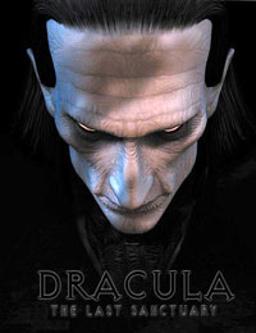
Dracula 2: The Last Sanctuary is a 2000 graphic adventure video game developed by Wanadoo Edition and jointly published by Index+, France Telecom Multimedia, Canal+ Multimedia and Cryo Interactive. Originally released for Microsoft Windows and Mac OS, it was ported to the PlayStation in 2002. In 2012, a slightly modified version developed and published by Microïds was released for iOS and OS X, and, in 2013, for Android. In 2014, the remade iOS/OS X/Android version was made available on Steam. There were dubbing mutations in French, English, Spanish, German, Italian, Hungarian and Czech.

Dracula: Resurrection is a 1999 graphic adventure video game developed by Index+. Set in 1904 Transylvania, the game serves as a follow-up to Bram Stoker's novel Dracula. Seven years after the death of Count Dracula, Jonathan Harker's wife Mina finds herself mysteriously drawn back to Transylvania. Jonathan subsequently travels to Borgo Pass in an effort to rescue her. The player assumes the role of Jonathan and uses a point-and-click interface to solve puzzles and navigate the game's world, often with the help of an object called the Dragon Ring.

Egypt 2: The Heliopolis Prophecy is an adventure video game developed and published by Cryo Interactive for the PC and PlayStation in 2000. It was released for Mac OS X in May 2012. Egypt 2 follows Egypt 1156 B.C. and is followed by Egypt III.

Egypt III, known as The Egyptian Prophecy in North America, is a 2004 graphic adventure game developed by Kheops Studio and published by The Adventure Company. The player must solve an array of ancient riddles that will help a dying Pharaoh survive and restore Egypt to glory. The game is the third and final game in the Egypt trilogy, following Egypt 1156 B.C. and Egypt II: The Heliopolis Prophecy. In 2010, Microïds released an adaptation of the game, split into parts, for the Apple iPhone.

The Secret of the Nautilus is a 2002 adventure video game, inspired by Jules Verne's science fiction novel Twenty Thousand Leagues Under the Sea. It was developed by Cryo Interactive and released for Microsoft Windows based PCs.
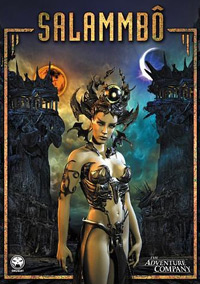
Salammbo: Battle for Carthage is a first-person perspective adventure video game. It began development at Cryo Interactive, but the company went bankrupt during production. The Salammbo team was ultimately acquired by DreamCatcher Interactive, which finished the game's development.

Return to Mysterious Island 2: Mina's Fate is a 2009 adventure video game developed by Kheops Studio and published by MC2 France under their Microïds label. It is a sequel to the 2004 video game Return to Mysterious Island, and is again based upon the 1875 book by Jules Verne, The Mysterious Island.

Syberia 3 is a graphic adventure video game developed by Microïds and published by Anuman for macOS, PlayStation 4, Windows, Xbox One, and Nintendo Switch. It is the third entry of the Syberia series and follows the adventures of American lawyer Kate Walker as she travels to various locations in the former Soviet Union.
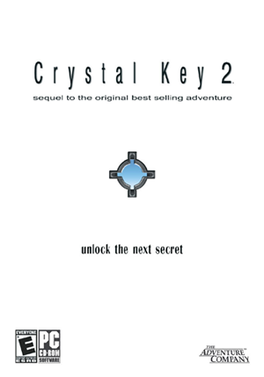
Crystal Key 2, known in Europe as Evany: Key to a Distant Land, is a 2004 graphic adventure game developed by Canadian studio Earthlight Productions, together with Kheops Studio. It was published by The Adventure Company, and is the sequel to the 1999 title The Crystal Key.

Cleopatra: Riddle of the Tomb is a 2007 adventure video game by French developer Kheops Studio. Outside of the United States, it is known as Cleopatra: A Queen's Destiny.
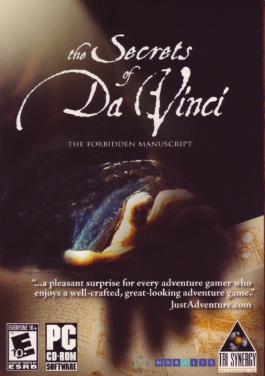
The Secrets of Da Vinci: The Forbidden Manuscript is an adventure game developed by Kheops Studio and published by Tri Synergy on June 7, 2006 on the PC. In 2009 it was released on the Mac OS X.

Syberia is a franchise of graphic adventure games created by Belgian comic artist and video game developer Benoît Sokal. Set within an alternate universe designed by Sokal and introduced in the 1999 video game Amerzone, the series is currently developed and published by French video game company Microids. The central focus of the franchise, beginning with the eponymous 2002 video game, follows the experiences of Kate Walker, an American adventurer who originally worked as a lawyer in a prominent New York City law firm. In each installment, Walker travels to various fictional locations in continental Europe and former Soviet states during the 2000s, where she encounters fantastical creatures as well as highly advanced automatons powered by intricate clockwork mechanisms.




















